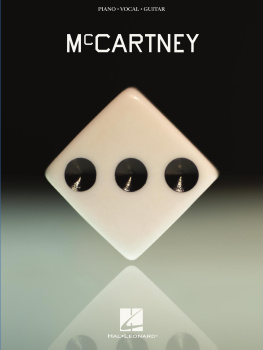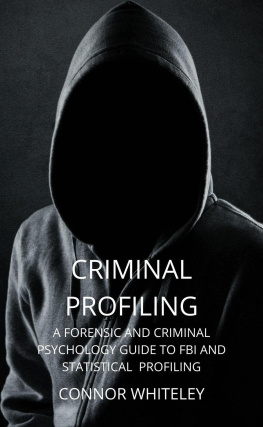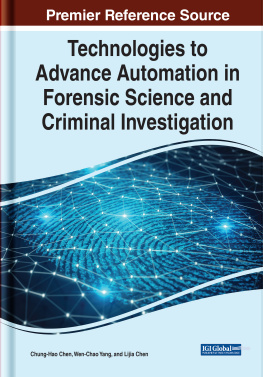First published by Willan Publishing 2006
This edition published by Routledge 2012
2 Park Square, Milton Park, Abingdon, Oxon OX14 4RN
711 Third Avenue, New York, NY 10017 (8th Floor)
Routledge is an imprint of the Taylor & Francis Group, an informa business
Carole McCartney 2006
The rights of Carole McCartney to be identified as the author of this book have been asserted by her in accordance with the Copyright, Designs and Patents Act of 1988.
All rights reserved; no part of this publication may be reproduced, stored in a retrieval system, or transmitted in any form or by any means, electronic, mechanical, photocopying, recording or otherwise without the prior written permission of the Publishers or a licence permitting copying in the UK issued by the Copyright Licensing Agency Ltd, 90 Tottenham Court Road, London W1P 9HE.
Hardback
ISBN-13: 978-1-84392-184-4
British Library Cataloguing-in-Publication Data
A catalogue record for this book is available from the British Library
Project management by Deer Park Productions, Tavistock, Devon
Typeset by GCS, Leighton Buzzard, Beds
Acknowledgements
The research for this book involved holding in-depth interviews with 14 respondents, chosen for their intimate involvement with both the criminal justice system, policy developments, and fingerprinting and DNA analysis. The data gathered from these individuals has informed the following chapters, with direct quotes (always reproduced anonymously). Their co-operation was invaluable and their views and insights represented faithfully.
This research would not have been possible without financial support from the Brian Hogan Scholarship (20012004) at the School of Law, University of Leeds, and an ESRC Post-Doctoral Fellowship (20042005). I was also in receipt of invaluable support from colleagues, in particular, Prof. Clive Walker. However, it would not have come to fruition had I not married an unrivalled husband and father, and had two beautiful daughters, who provide all the motivation and encouragement one could wish for.
Introduction
Forensic science and forensic identification technologies
Although considered largely a twentieth-century innovation, the use of medical evidence in courts, usually furnished by ill-prepared surgeons testifying to the cause of death, dates back to the Middle Ages (Forbes 1985), with foundations laid by scientists such as Edmund Locard (18771966) whose Principle of Exchange (that every contact leaves a trace) paved the way for forensic science. The American-favoured term criminalistics, as the science dealing with the recognition, collection, identification, individualisation and interpretation of physical evidence, and the application of the natural sciences to law-science matters, originated in the book Handbuch fur Untersuchungsrichter als System der Kriminalististik (3rd edn, 1898) by Hans Gross (NIJ 2004: 2). From these beginnings, as understanding of the true extent of the unreliability of human memory has grown, at the same time as scientific and technological power and knowledge have increased, scientific methods of criminal detection have been developed, until the contribution of science to the detection of both major and volume crime is now lauded as clear and substantial (Blakey 2002: vi).
Forensic science can be considered broadly as the application of natural and physical sciences to the resolution of legal conflicts (not limited to the criminal courts, but increasingly used in civil litigation and other regulatory matters), with the House of Lords Select Committee on Science and Technology outlining the task of forensic science as to serve the interests of justice by providing scientifically based evidence relating to criminal activity.1 The Forensic Science Service (FSS), the primary provider of forensic science services in England and Wales, considers itself an integral part of the criminal justice system, with its mission to provide forensic science information and expertise to support the investigation and detection of crimes and the prosecution of offenders, and to contribute to the prevention, deterrence and reduction of crime (FSS 2001: xi). They also state that their vision is to realise the full potential of forensic science to contribute to a safer and more just society, thus giving themselves a much larger potential sphere of influence (an influence yet to be fully explored and examined).
Scientific detection methods originate in a variety of scientific disciplines and have included the analysis of an almost infinite variety of exhibits, including the numerical, descriptive and photographic recording of bodily characteristics of suspects, victims and witnesses (Valier 2001: 247). There is potentially no limit to the scope of physical evidence (or trace evidence) that can be utilised by forensic scientists, from the smallest fragment of glass, to the most obscured fingerprint, to the tiniest swab of human tissue, to the entire scene of a major explosion or the realms of cyberspace. In addition, there are no exclusions which curtail the number of disciplines that may be utilised in a forensic investigation. Most often, forensic science is a sub-discipline of a larger scientific body such as pathology, odontology, toxicology, serology or genetics. There are also experts who may be called upon to testify on matters at hand (such as forged documents, firearms, etc.), each being a forensic specialist for the purposes of a criminal trial. Indeed, the list of potential experts is almost boundless, with even estate agents having testified as forensic housing experts.2 Many are able to apply for registration with the Council for Registration of Forensic Practitioners (CRFP), which has deliberately been left open to all types of forensic practitioner who give expert evidence anywhere in the UK, with a view to producing an inclusive register.3
The variety of methods employed in forensic investigation and the number of specialities involved have tended to obscure the reality that the most commonly used forensic scientific evidence takes the form of bodily samples such as fingerprints, urine, hair samples, mouth swabs, and breath or blood samples. Significant developments in the identification of individuals since the advent of fingerprinting, and the resulting legal reforms enacted in the wake of DNA testing in particular, make the critical assessment of the use of such technologies and their evidential impact essential. This book then focuses upon the forensic identification technologies of fingerprinting and DNA typing as the two identification technologies most often relied upon in criminal investigations. With emergent identification technologies (often referred to as biometrics) such as iris identification, facial mapping, or voice recognition yet to be proven reliable their use is consequently restricted at present, though pilots and security upgrades are increasingly utilising such biometric technologies (Aas 2004). In contrast, the use of fingerprinting by Scotland Yard dates back to 1902, and its use has been widely accepted for decades, their reliability, and trusted status, just like that of forensic science in general, remaining intact in the face of recent scrutiny:







